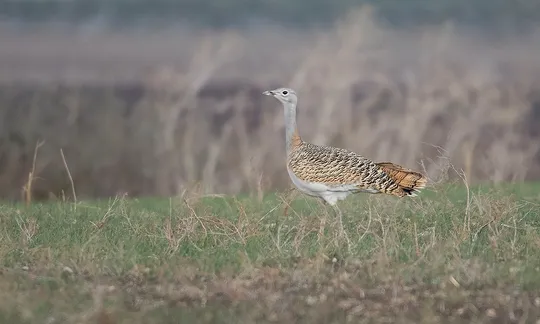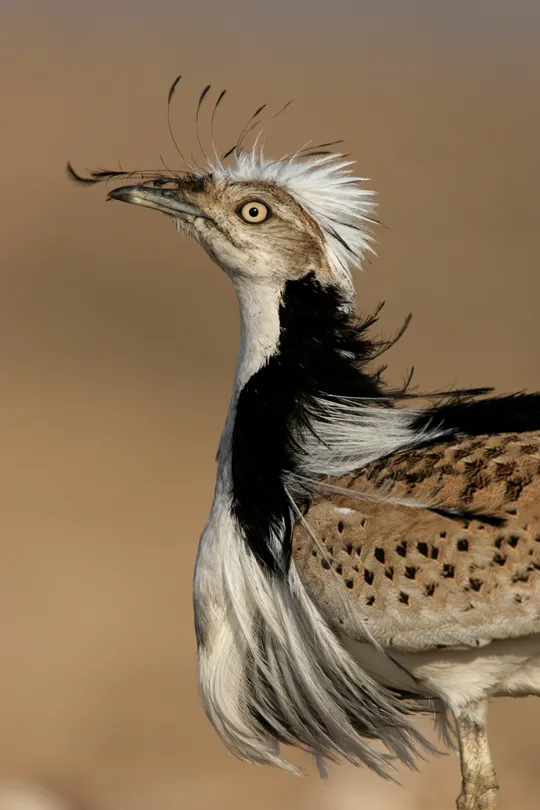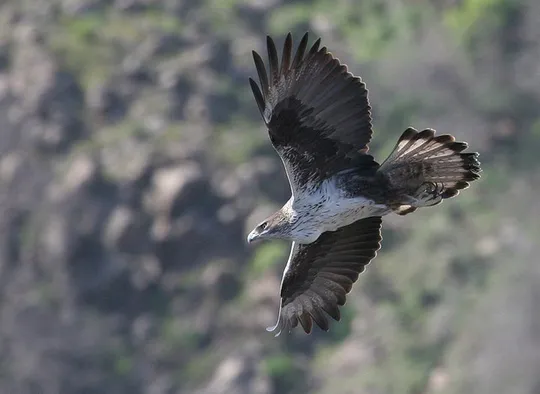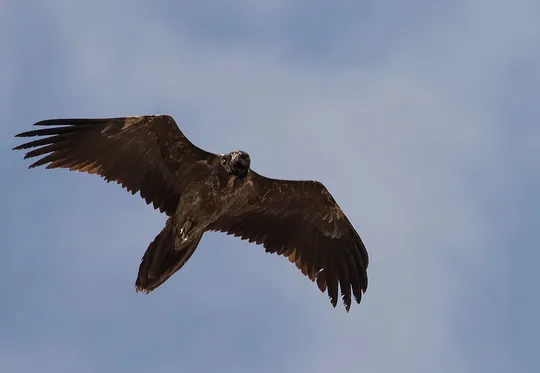Tetrax tetrax
 Not applicable
Not applicable

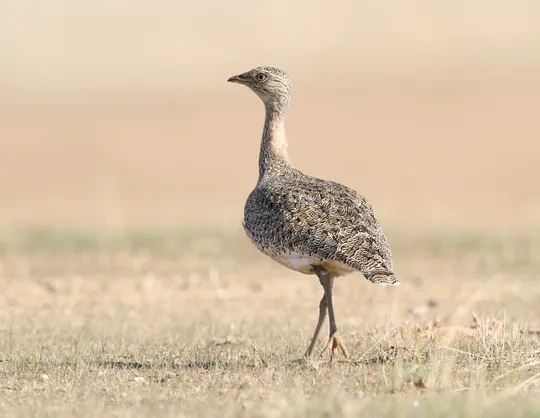
| Presence In Israel | Winter Visitor |
|---|---|
| Breeding In Israel | Non-Breeder |
| Migration Types | Long Range |
| Nest Locations | Ground |
| Diet Types | Generalist |
| Foraging Grounds | Ground |
| Body Sizes | Medium (500 - 1000g) |
| Threat Factors | Hunting and trapping, Habitat loss and fragmentation |
The Little Bustard is a medium-sized ground-dwelling bird whose streaked brown plumage provides excellent camouflage in the grassy habitats it frequents. It populates grassy plains, pasture and cultivated fields. Omnivorous and feeds on seeds, small fruits and inflorescences, insects and small vertebrates. During the breeding season the male’s head becomes grey and neck is black and sports a double white collar. The females and immature birds are brown-grey very well camouflaged from predators. In flight, the Little Bustard reveals white wings with black primaries and sandy brown wing coverts, the same color as its body plumage.
The Little Bustard is a rare passage migrant and winter visitor in northern Israel, particularly in the Bet She’an Valley and the Golan Heights. Individual birds are seen yearly. In previous years, it was more common and occasionally seen in flocks of a few to tens of birds.
- פז, ע. 1986. עופות. מתוך אלון, ע. (עורך), החי והצומח של ארץ ישראל. כרך 6. הוצאת משרד הביטחון, ישראל.
- Symes, A. 2013. Species generation lengths. Unpublished, BirdLife International.
- Species page at Birdlife International
Distribution maps
The maps presented here provide visual information on the distribution of species in Israel from the past and present, and the changes in occupancy and breeding density during the comparison period. For further reading
Relative Abundance 2010-2020
Breeding density values in the current decade as determined from experts' opinion and observations from databases.
| Data Missing | Sporadic | Limited Sites | Low Density | High Density |
|---|---|---|---|---|
| 8 | 12 | 12 | 21 | 19 |
Relative Abundance 1980-1990
Density values based primarily on the book The Birds of Israel (Shirihai 1996).
| Data Missing | Sporadic | Limited Sites | Low Density | High Density |
|---|---|---|---|---|
| 5 | 14 | 14 | 17 | 22 |
Occupancy 1990-2020
The map shows differences in the species breeding distribution between the 1980's breeding map and the current weighted breeding evaluation. Negative value - species previously bred in the grid and is not presently breeding; positive value - species has not previously bred in the grid and is currently breeding.
| Data Missing | No Change | Occupancy Increase | Occupancy Decrease |
|---|---|---|---|
| 6 | 35 | 1 | 9 |
Change in Relative Abundance 1990-2020
The map shows the changes in the relative abundance of a species in each of the distribution grids between the breeding map of the 1980s and the weighted current breeding evaluation. Negative values - decline in abundance; positive values - increase in abundance; zero - no change in abundance.
| 80 to 100 | 50 | 20 to 30 | No Change | 30- to 20- | 50- | 100- to 80- | Data Missing |
|---|---|---|---|---|---|---|---|
| 0 | 4 | 2 | 22 | 12 | 14 | 11 | 16 |
| Rarity | |
|---|---|
| Vulnerability | |
| Attractiveness | |
| Endemism | |
| Red number | |
| Peripherality | |
| IUCN category | |
| Threat Definition according to the red book |
